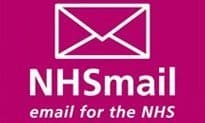A tender for NHSmail2 is due out this month following Treasury approval for £168m in funding to transition to a new service.
Health and Social Care Information Centre programme director Mark Reynolds told EHI the OBC covers the procurement of a new mail service and continuation of the existing service until that is in place. Worth £168m, it covers all expenditure for five years.
The Crown Commercial Service is due to issue a formal tender this month for a ‘managed email framework’, which will be available for all public sector to use. Procurement was going to be done by creating a secure email ‘lot’ on a Public Services Network framework, but a separate framework for email will now be created.
A nine-year contract for NHSmail was awarded to Cable and Wireless in 2004 and was worth around £30m a year. This has been extended to June 2014 with provision for a two-year transition.
“We will continue using the existing service, procure a new one and transition to it with no impact on the user base. We have until June 2016 to do that, which is a comfortable period,” Reynolds said.
“2014 is about procurement and contract award and 2015 is about delivery, transition and closing off the existing service.”
He said there will effectively be two procurements; one for suppliers to get on the framework, then another to select the preferred supplier for NHSmail.
A survey of NHSmail users last autumn showed that 80% were satisfied or very satisfied with the service, but they also asked for a number of improvements.
Mail box sizes were doubled in 2013 (to 100Mb Bronze, 400Mb Silver, 1Gb Gold and 2Gb Platinum) and will be increased again under the new contract. Reynolds said users also want a richer web experience for when they are accessing via the internet or web browser.
They also wanted some add-ons, which will not be funded as part of the new service, but made available as part of the framework contract for provider organisations to buy. This will include remote storage or ‘dropbox-type functionality’, which will be certified to use patient identifiable data and will “integrate really nicely with the service”.
“Our view is we are providing a service to customers and as part of that we need to offer them choice in the way they can procure add-ons,” Reynolds said.
Version two of NHSmail could be provided by a single supplier or a consortia. He said the HSCIC has been doing a lot of pre-procurement engagement to encourage small and medium-sized enterprises to get involved and more than 90 suppliers are engaged in the process.
This included a ‘Dragon’s Den’ event where SMEs got the chance to do a 10-minute pitch to a panel of big suppliers about what they could add to their product.
“From the start we recognised the need to work with industry to develop the requirements. Because it’s a financially constrained time we didn’t want suppliers to spend quite a lot of money on a bid when it’s not in their best interest or they wouldn’t win,” Reynolds said.
He added that the range of suppliers involved is very high quality and the tender process will be a “tough competition”.
There are 650,000 users of NHSmail, but capacity could be increased depending on the prices offered by bidders. Demand is high as shown by the Cornwall health community recently deciding to move on to NHSmail, Reynolds added.

